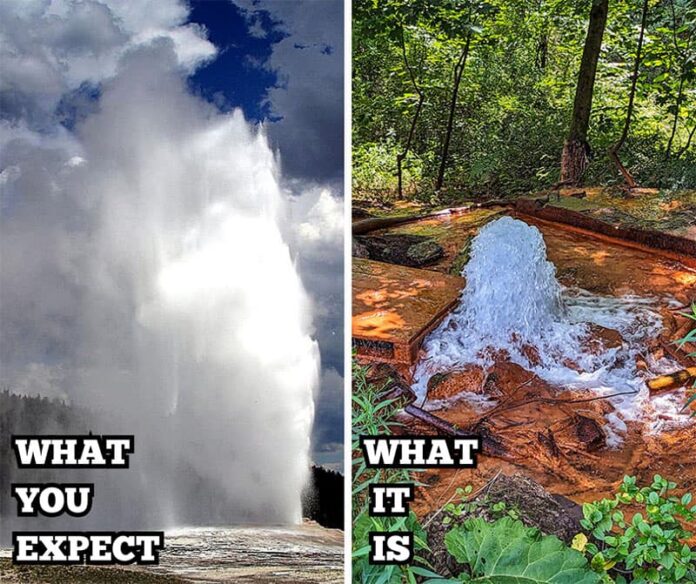
If you’re looking for information about “the only geyser in Pennsylvania”, you’re in the right place.
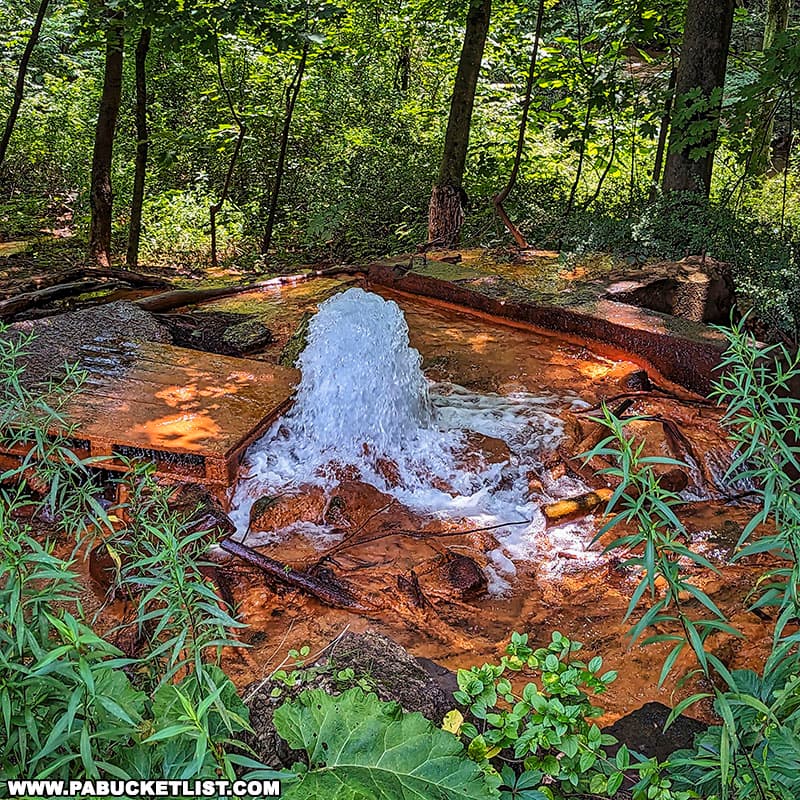
Now for the bad news – there are no geysers in Pennsylvania!
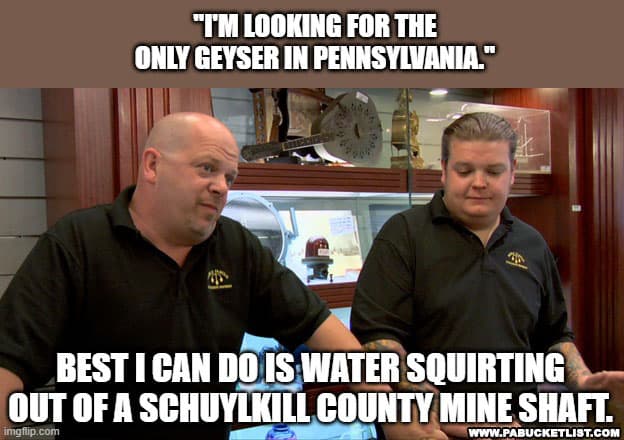
That fact hasn’t stopped the Internet from dubbing a bubbly roadside anomaly along Big Mine Run Road in Schuylkill County “the only geyser in Pennsylvania”, but it just isn’t true.
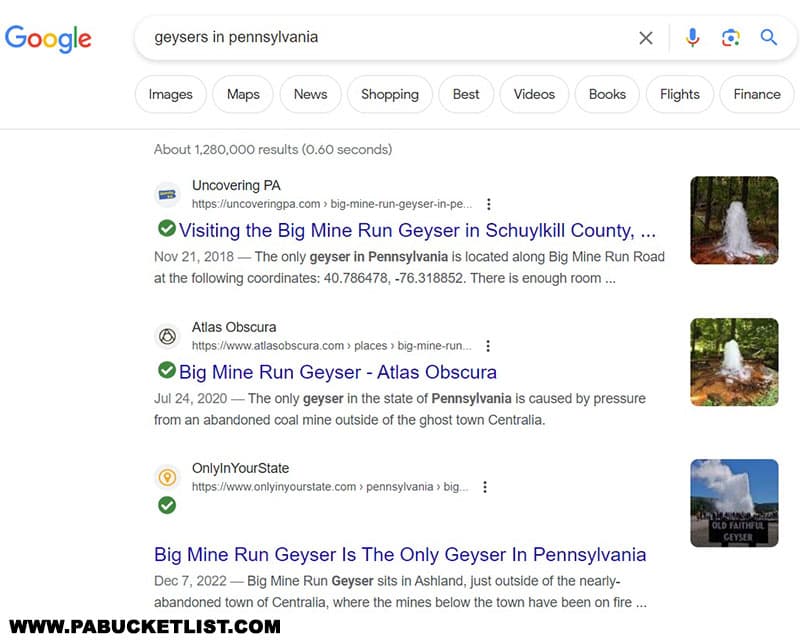
What you ARE looking at, should you drive by this roadside curiosity, is simply water being forced out of a ventilation shaft bored into a long-abandoned coal mine.
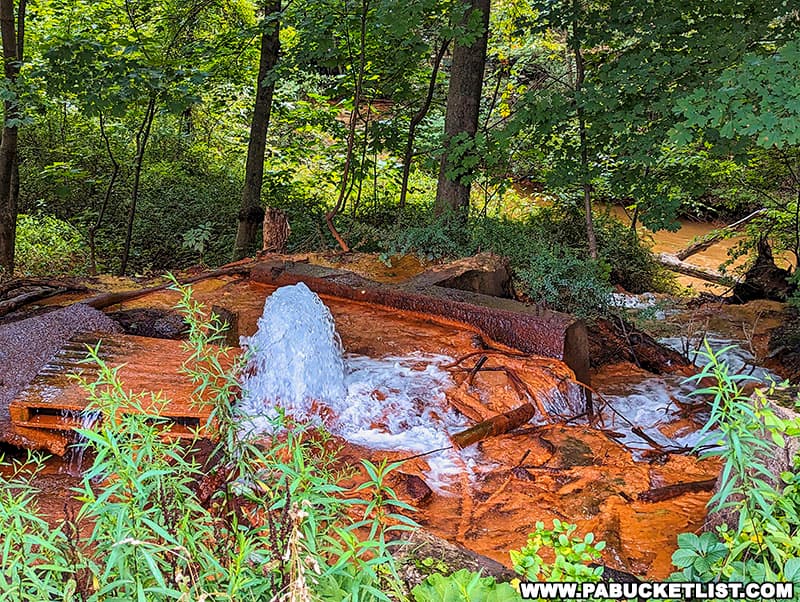
Unlike an ACTUAL geyser, where boiling water and steam are periodically discharged from a hot spring, the water being expelled from the ventilation shaft along Big Mine Run Road is not heated at all.
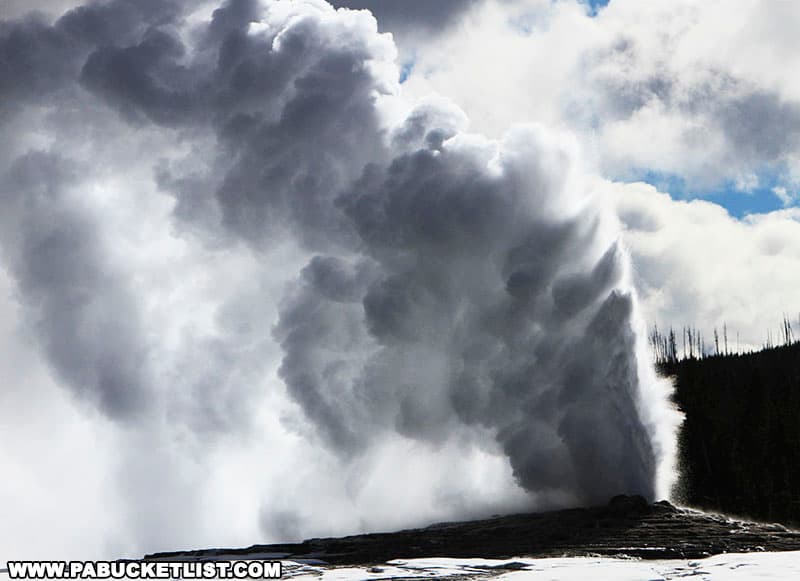
So what exactly IS going on at this much-hyped roadside attraction just outside of Ashland?
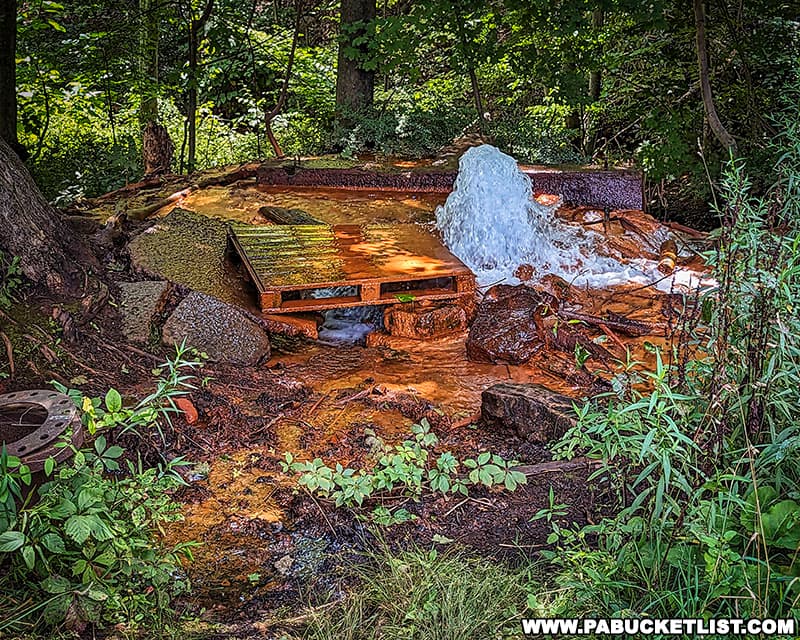
Mine Water and the Big Mine Run Road Anomaly
A trip to the nearby (and excellent) Museum of Anthracite Mining at the Ashland Borough Hall will help you understand what is really going on here along Big Mine Run Road.
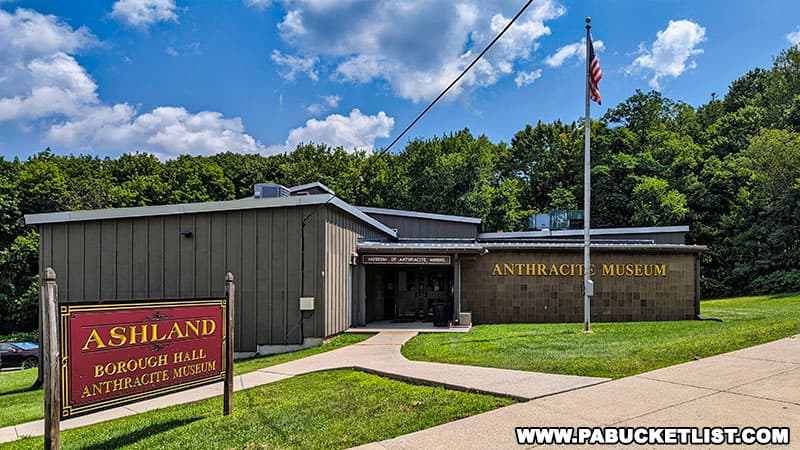
This free museum does an excellent job of describing the history of anthracite coal mining in the region, along with detailing the techniques used and problems faced in the process.
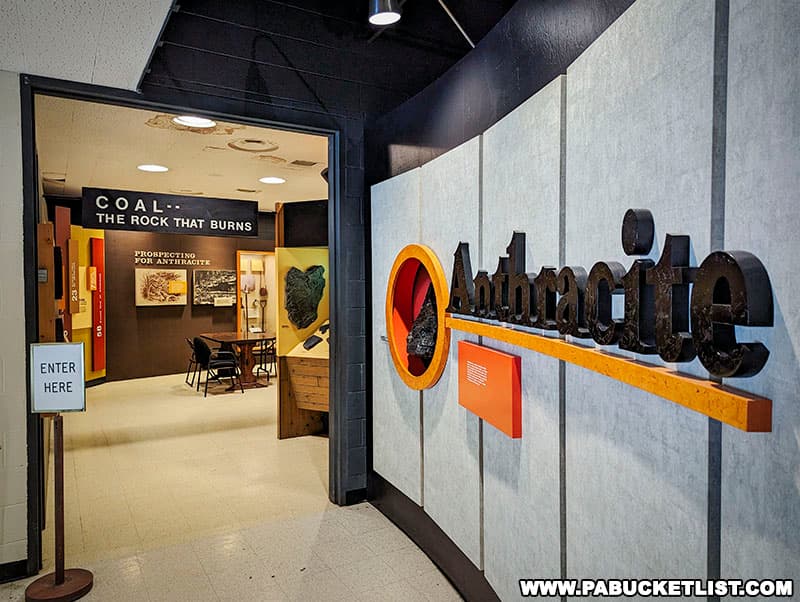
One such problem that had to be overcome in underground coal mining was removing the water that seeped into the mines from above and around the mine shafts.
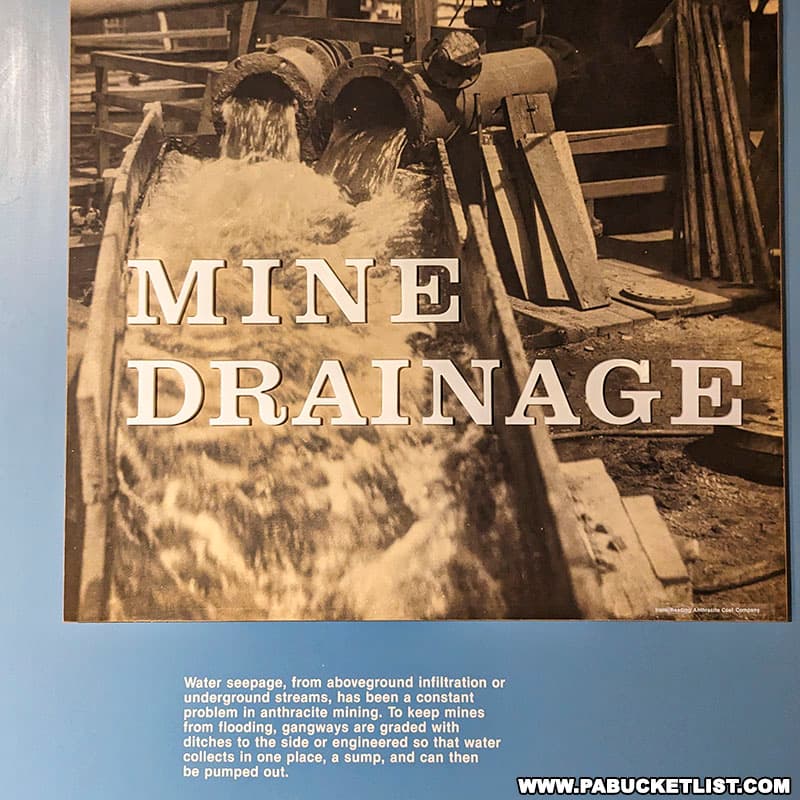
Using sloped shafts, ditches, and pumps, water could be kept in check and expelled from the mines, so that work could continue.
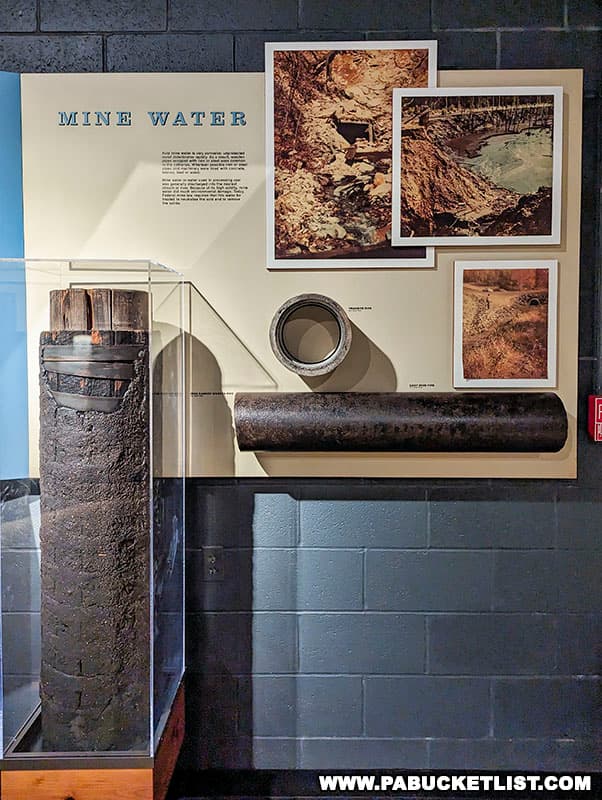
But when those mines closed down and the pumps were turned off, water filled those shafts, and the resulting pressure caused some of that water to be expelled through former ventilation shafts, like the one along Big Mine Run Road.
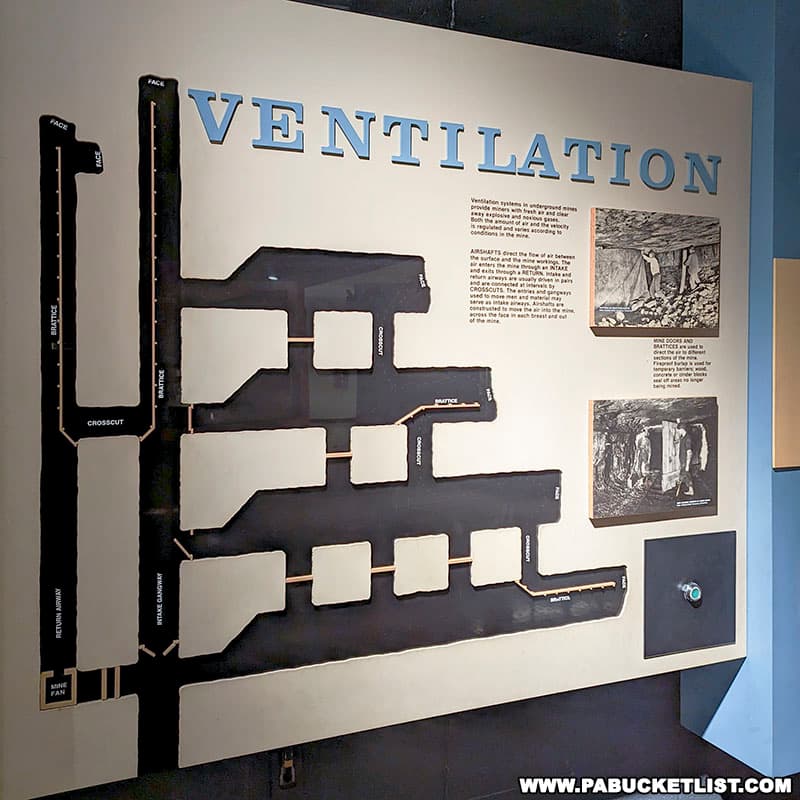
The drainage from the ventilation shaft has been left undisturbed because officials fear capping it could cause water to back-up into nearby basements, or even cause a blow-out if water pressures in the abandoned mine shafts were to rise too high.
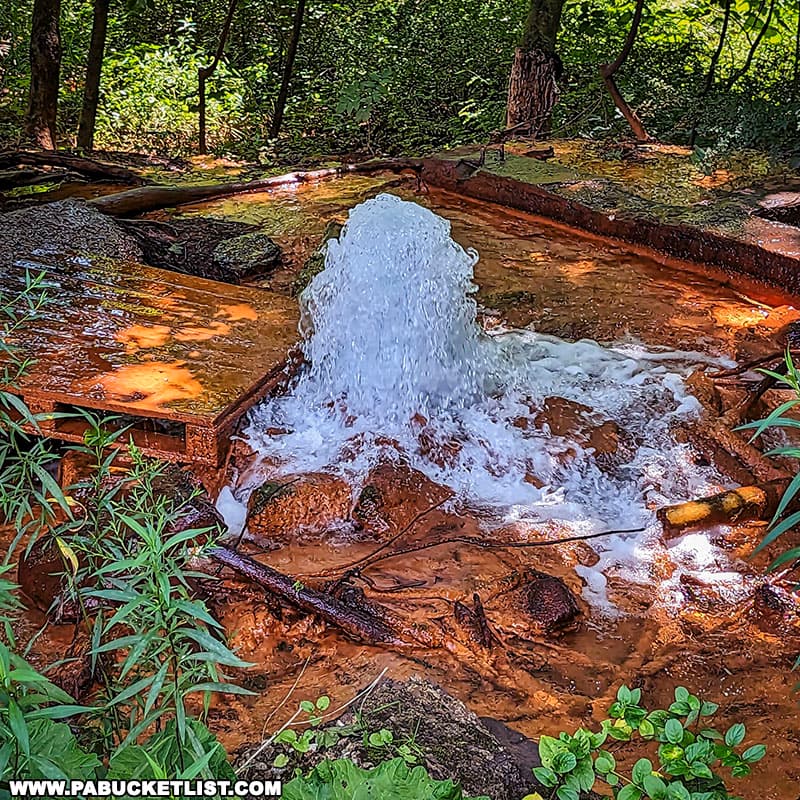
If you do want to take a gander at this not-a-geyser along Big Mine Run Road, it’s located in a residential area on private property, so please view it from the road only.
If you want to see a REAL geyser, pack your bags for somewhere like Yellowstone National Park, which is home to more than 500 natural geysers!
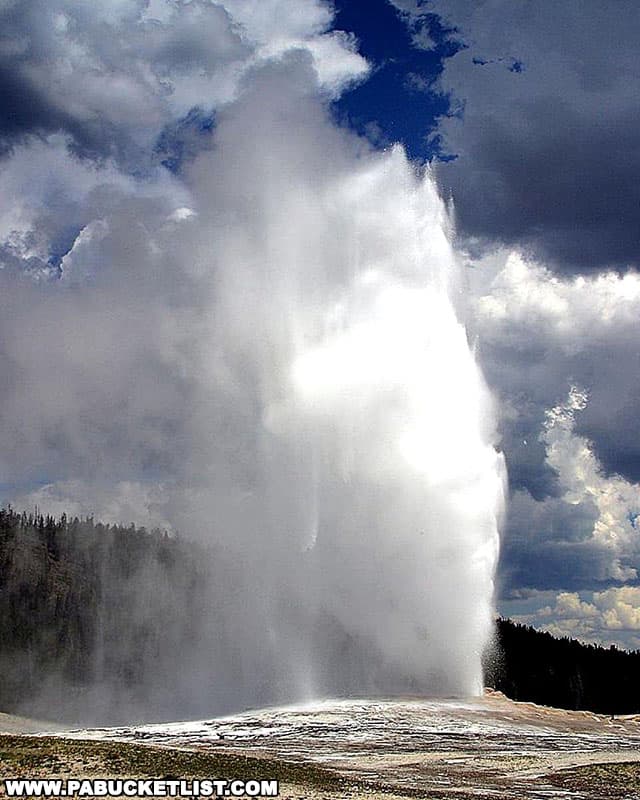
Nearby Attractions
Pioneer Tunnel in Ashland features both a coal mine tour and a steam train excursion.
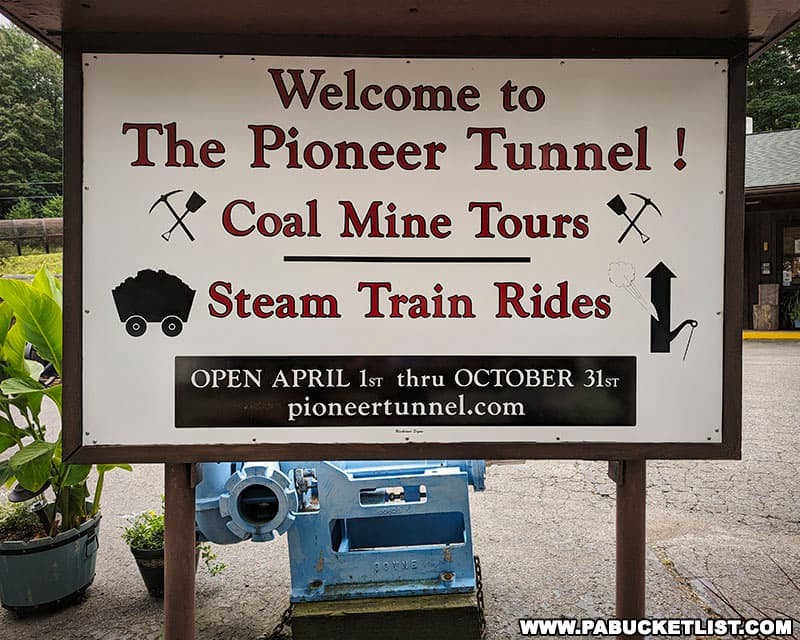
The coal mine tour takes you hundreds of feet underground and into a former working coal mine.
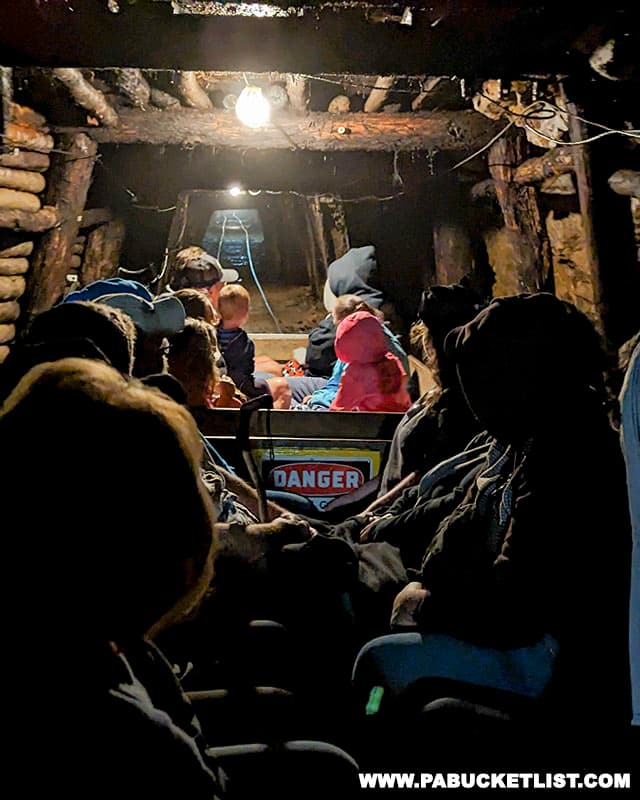
Here you can get a bottom-up look at a coal mine ventilation shaft, similar to the one along Big Mine Run Road.
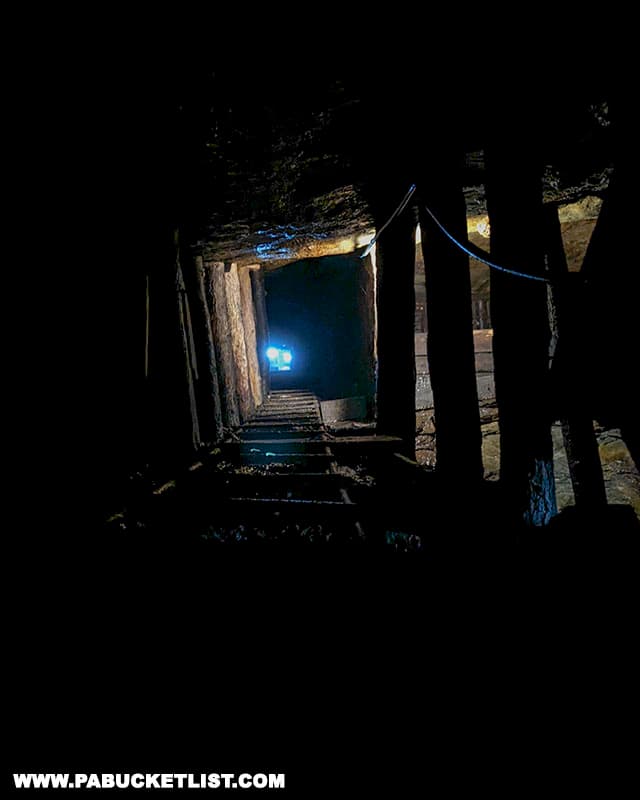
The steam train excursion takes you on a ride through land that was formerly strip mined, and that is now slowly returning to it’s original natural beauty.
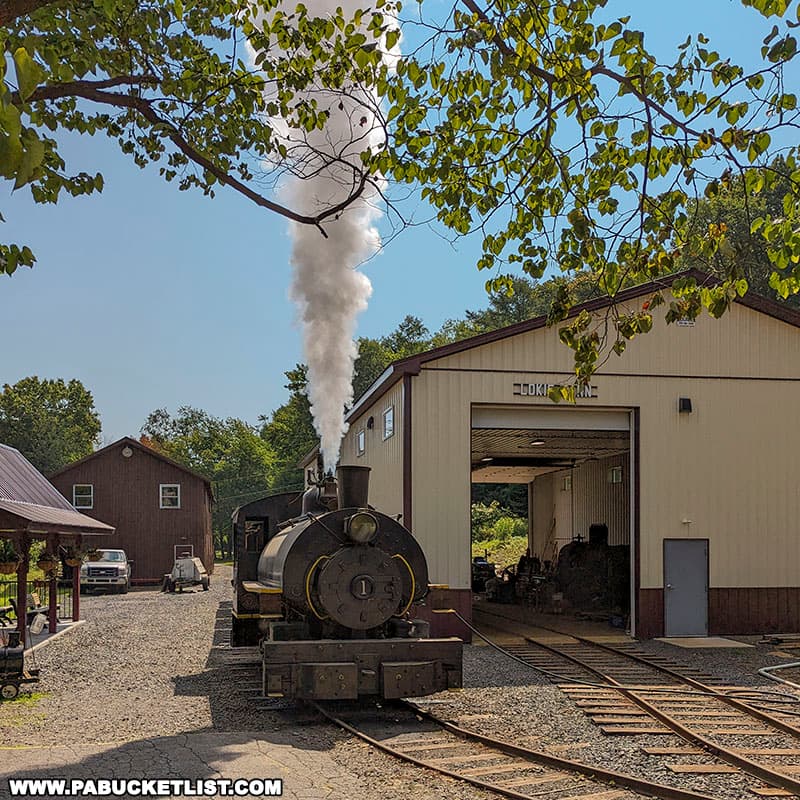
This out-and-back ride gives you a first-hand look at PA’s famed anthracite coal region.
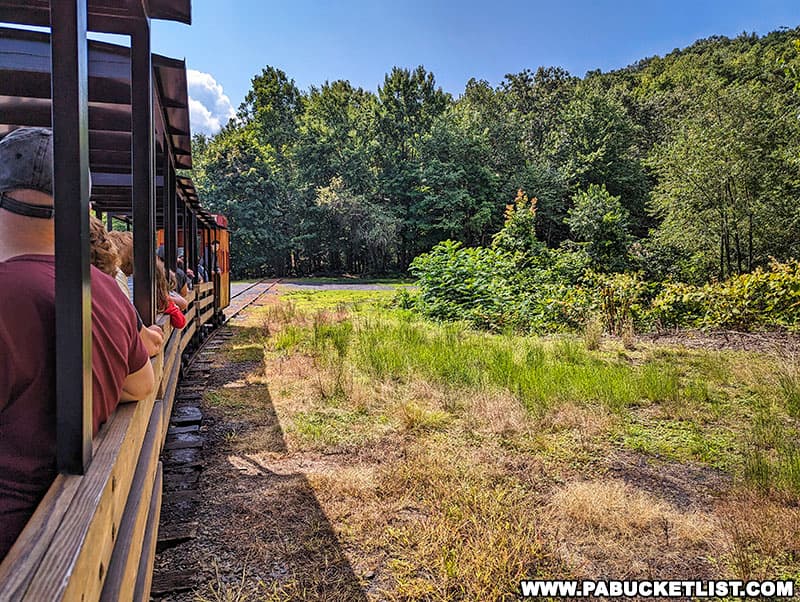
The Ashland Mothers Memorial, erected in 1938, is a seven foot high bronze sculpture in downtown Ashland, based on the 1871 painting known as “Whistler’s Mother”.
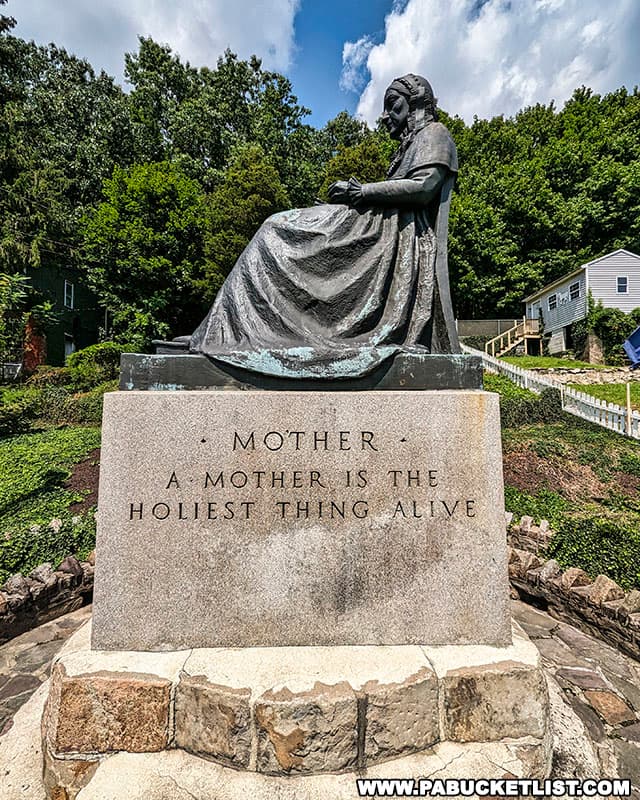
The Museum of Anthracite Mining, as mentioned previously, is located in the Ashland Borough Building (and right next to the Pioneer Tunnel Coal Mine).
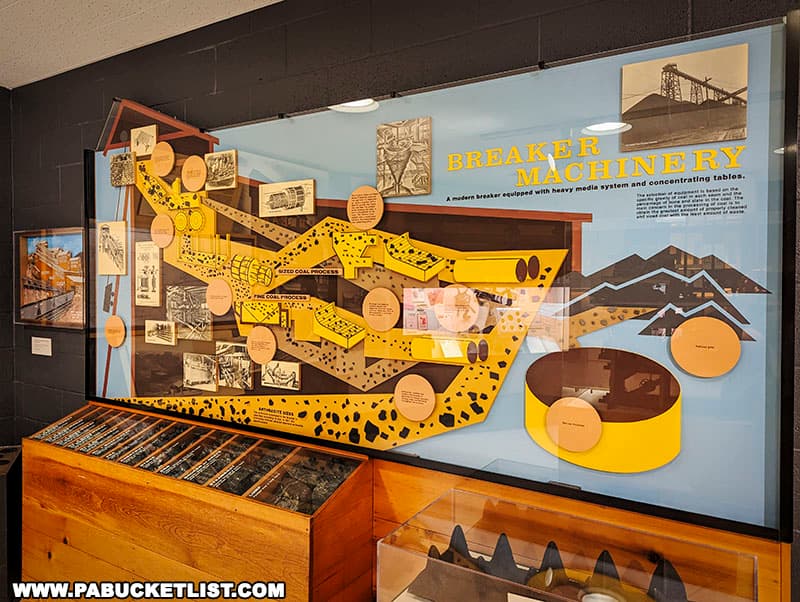
Here you can learn just about everything you’d ever want to know about anthracite coal – how it forms, how it is mined, how mining technology has changed over the years, and the dangers associated with the process.
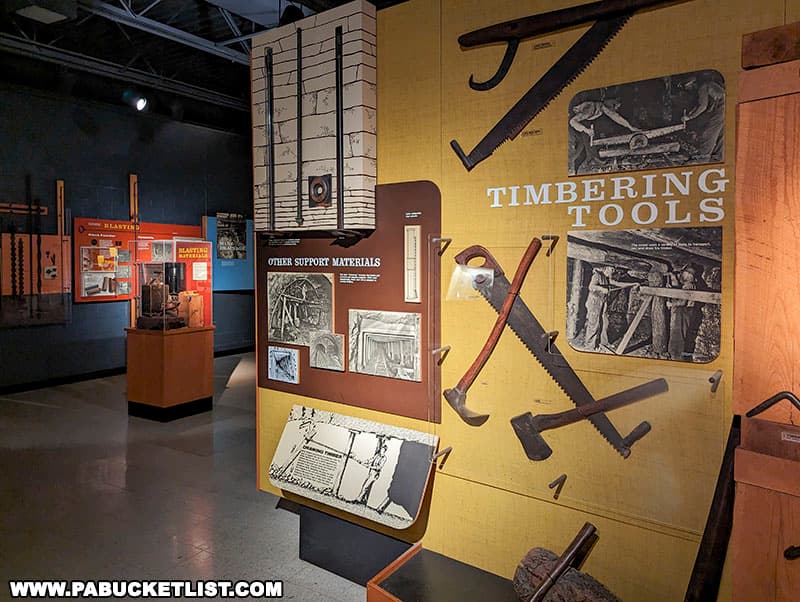
It’s a wonderful museum and well worth a visit if you want to better understand the heritage and history of the region.
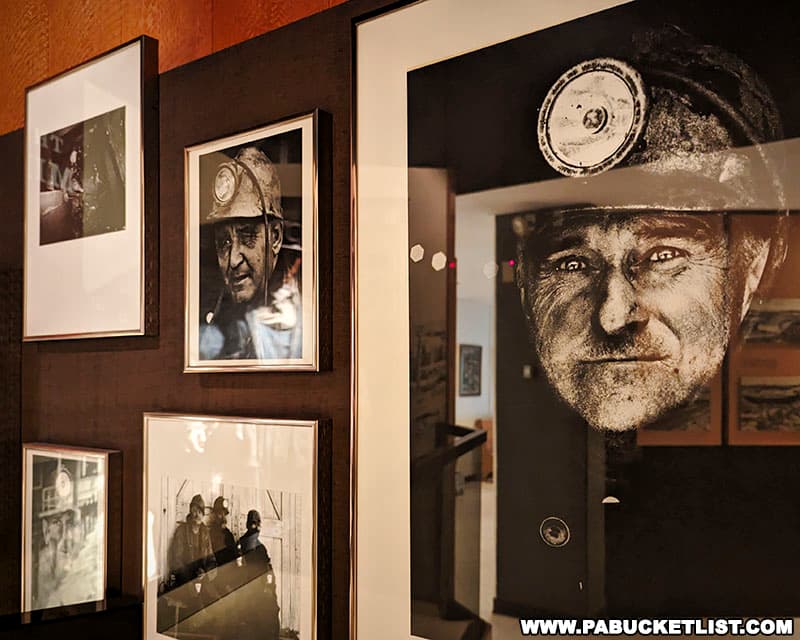
Did you enjoy this article?
If so, be sure to like and follow PA Bucket List on Facebook, Instagram, and/or Pinterest to learn more about the best things to see and do in Pennsylvania!
Click on any of the icons below to get connected to PA Bucket List on social media.


